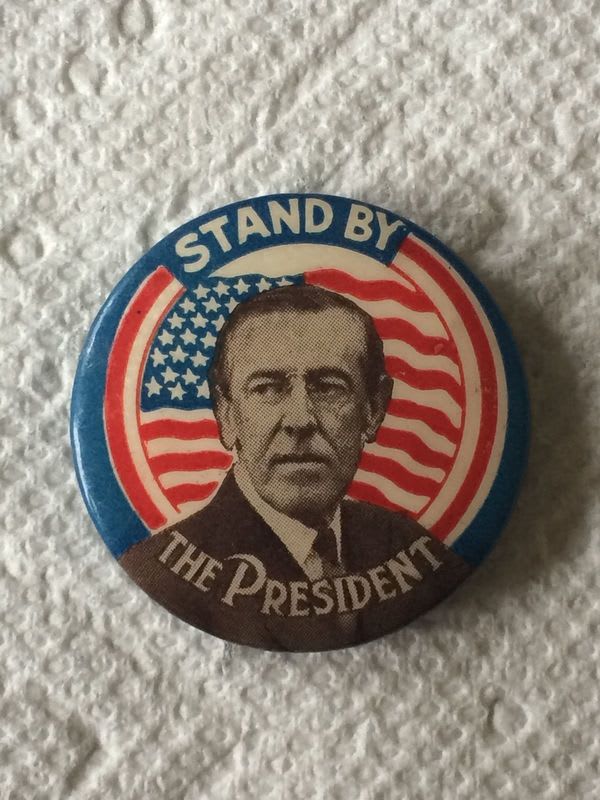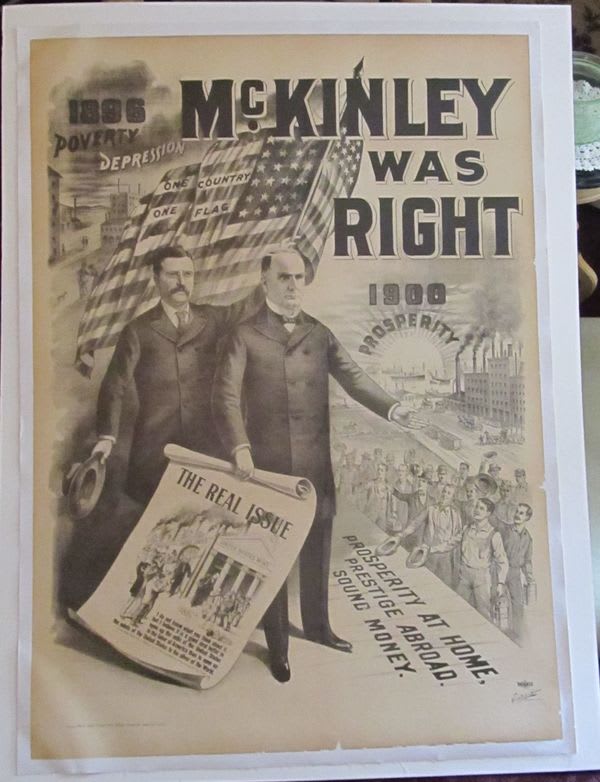Posters, pins, buttons, pennants, badges ñ when it comes to politics, candidates did and do advertise in all kinds of different ways. Curious how valuable that memorabilia can be? Read below to find out!

Photo credit: eBay
How old is it? Political memorabilia as we know it really came into fashion during the 19th century, though About.com explains that George Washington and his supporters were some of the first to sport campaign buttons back in 1789. Political memorabilia gained momentum alongside more advanced manufacturing processes and inventions like photography.
Though buttons were found throughout the 19th century, many say that they weren’t used to convey overt political messages till 1840 (according to Answers.com). William Henry Harrison created a slogan, which was a difference from Washington’s buttons thatsimply sported his name or initials. Toward the end of the 19th century is when political campaigns generally ñ with pins, buttons, posters, the works ñ really became the norm.
Why did itbecome popular? As Collectors Weekly and The Baltimore Sun explain, political pins and the like were cheap and easy ways for candidates to spread their political messages to the public. Especially with the invention of photography ñ which allowed candidates’ faces to be put on posters and buttons ñ and more advanced production processes in the industrial age, making these items became a lot easier for candidates looking for ways to advertise.

Photo credit: US Americana
Are they tough to find? Depends on the time period you’re looking for. Almost anything from the 19th century is pretty rare, as About.com explains, including tintype or ferrotype photos of Abraham Lincoln during his 1860 campaign. It’s easier to find the memorabilia as you get into the 20th century, though eBay explains that reproductions are rampant.
How much do they cost? It depends on the item ñ many common pins and buttons are generally pretty cheap, ranging from $5 to $50, though some rarer ones sell for hundreds of dollars (really, really rare ones will be in the thousands). Posters and larger items generally cost more, typically around $100 or more ñ again, the number goes up depending on the age of the item.

Photo credit: eBay
What are some identifying features?
- Date: eBay suggested checking for a date, because the 1973 Hobby Protection Act required political items to be clearly dated so people can tell if the item is an imitation. Check the backpaper or curl of a button or pin, or search for tiny print on a poster or sticker. Also be on the lookout for dates that might’ve been painted over, ripped off, or scratched out ñ if you see something like that, be suspicious.
Date is also helpful because you can place a campaign with the timestamp ñ see something dated in 1975 but it claims to be an authentic piece of FDR memorabilia? You’ll know instantly that it’s a fake. Obviously this only applies to more recent items since the law is relatively new, but it can be helpful.
- Celluloid/pinback buttons: Because these were not used until 1896 (as Collectors Weekly explains, the button wasn’t patented until 1896), be suspect of modern-day pins and buttons that feature presidents from before that time period. eBay does, however, add older reproductions might still have value ñ as they’d still be antiques. Pinbacks also generally have info on the back or somewhere in the curl ñ inspect it carefully for hints about who manufactured it and when.
- Material:Some political badges and other collectibles were made of valuable materials, like silver, which are naturally going to increase/decrease with the market of that material ñ not simply because of the date they were made or who they advertised. CNBC suggests keeping an eye on precious metals that might be in the items you’re looking to buy or sell.
- Telltale reproductions:Is the seller selling a lot of one item, or offering a steep discount? This is a telltale sign that the item is likely a reproduction. Older items will likely also show signs of age ñ maybe they’ve been folded or rolled. The paper of yesteryear also wasn’t as high of quality as today’s paper, so keep an eye on that as well.
Many collectors tend to focus on a niche of antique political memorabilia, so consider starting small with a very targeted type of item.
SKM: below-content placeholderWhizzco for DOT

